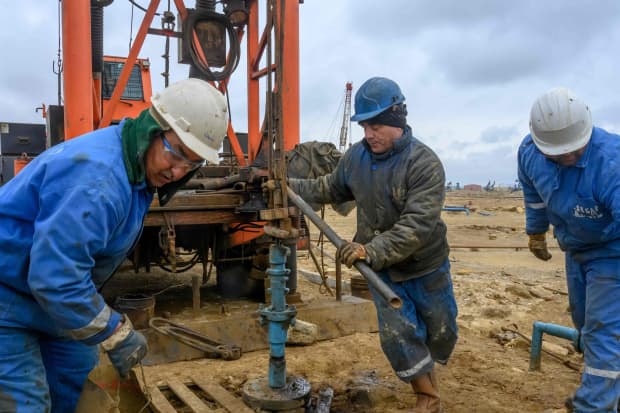This post was originally published on this site

Mladen Antonov/Agence France-Presse/Getty Images
Oil futures rose Tuesday, looking to build on the biggest one-day gain in more than five months, boosted by optimism over prospects for a COVID-19 vaccine as the continued spread of the disease undercuts fuel demand.
“Oil funds got caught short as the demand outlook improves with hopes that we will get a coronavirus vaccine,” said Phil Flynn, senior market analyst at The Price Futures Group.
“The market was betting big on more extensions of lockdown and more demand destruction,” he said in a Tuesday report. “While the vaccine is still months away, the trade must adjust for a demanding comeback that should come back faster than production.”
West Texas Intermediate crude for December delivery GCZ20, +1.34% CL.1, +0.99% rose 57 cents, or 1.4%, to $40.86 a barrel on the New York Mercantile Exchange. January Brent crude BRNF21, +0.94% BRN00, +0.94%, the global benchmark, was up 55 cents, or 1.3%, at $42.95 a barrel on ICE Futures Europe.
WTI jumped 8.5%, while Brent soared 7.5% on Monday after Pfizer Inc. PFE, -1.28% and Germany-based BioNTech SE BNTX, +3.48% announced their vaccine candidate was more than 90% effective in protecting people from COVID-19 in a trial. The news sparked a massive rally in stocks and other assets perceived as risky.
Some analysts, however, questioned how much further upside for oil prices might be available in the near term as rising COVID-19 cases in Europe and the U.S. begin to weigh on consumer and business activity.
“While a successful vaccination should ultimately support the return of oil demand to normal levels, a number of hurdles, from final approval, to the ramp-up of production, to logistics remain, but hope is that a timely development could stave off the necessity for further lockdowns in the future,” wrote analysts at JBC Energy, a Vienna-based consulting firm, in a Tuesday note.
The consultants said their road mobility indicator for Europe, meanwhile, had dropped to its lowest level since June, with data through Nov. 6 beginning to reflect the early stages of new lockdowns in France and Germany.
Analysts at Commerzbank noted that Chinese crude oil imports fell in October to their lowest level since April, while Saudi Arabia granted further discounts to Asian customers for December shipments, “presumably because of the muted demand,” they said. “At a discount of [50 cents] per barrel vs. the Oman/Dubai benchmark, customers are enjoying the highest discounts since June.”
Weekly U.S. supply data from the American Petroleum Institute will be released as usual late Tuesday, but the weekly report from the Energy Information Administration will be delayed to Thursday because Wednesday is Veteran’s Day, a federal holiday.
On average, analysts expect the EIA to show a decline of 3 million barrels in domestic crude supplies for the week ended Nov. 6, according to a survey conducted by S&P Global Platts. The analysts also expect to see inventory declines of 600,000 barrels for gasoline and 2 million barrels for distillates.
On Nymex Tuesday, December gasoline RBZ20, +0.78% added 0.8% to $1.1705 a gallon and December heating oil HOZ20, +1.22% rose 1.2% to $1.2315 a allon.
December natural gas NGZ20, +3.91% climbed by 3.9% to $2.971 per million British thermal units. Weekly natural-gas supply data from the EIA will be released Friday, a day later than usual due to Wednesday’s holiday.

